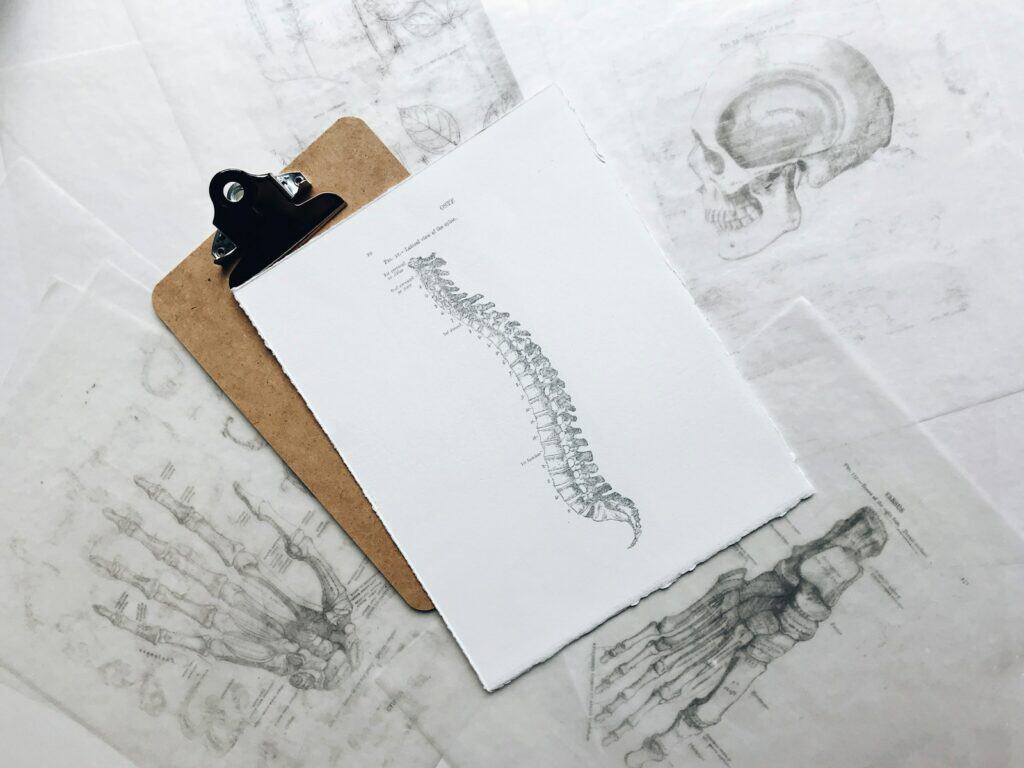Chiropractic care is a healthcare discipline that focuses on diagnosing and treating mechanical disorders of the musculoskeletal system, particularly the spine. You may have heard of chiropractors adjusting spines, but the practice encompasses much more than just spinal manipulation. At its core, chiropractic care is based on the principle that the body has an innate ability to heal itself when the musculoskeletal system is properly aligned.
By addressing misalignments, or subluxations, chiropractors aim to restore balance and function to the nervous system, which can lead to improved overall health. The techniques employed in chiropractic care vary widely, but they often include spinal adjustments, soft tissue therapy, and lifestyle counseling. When you visit a chiropractor, they will typically conduct a thorough assessment, which may include physical examinations and diagnostic imaging, to understand your specific condition.
Once they have identified the issues at hand, they will develop a personalized treatment plan tailored to your needs. This holistic approach not only targets immediate pain relief but also seeks to promote long-term wellness by addressing the root causes of your discomfort.
Key Takeaways
- Chiropractic care involves the manipulation of the spine and other body structures to alleviate pain and improve overall health.
- Chiropractic care can be an effective method for managing pain, particularly in the back, neck, and joints.
- Chiropractic care can contribute to overall wellness by improving nervous system function and promoting natural healing.
- Chiropractic care can help improve posture and mobility by addressing misalignments in the spine and joints.
- Chiropractic care can reduce stress by promoting relaxation and improving nervous system function.
The Benefits of Chiropractic Care for Pain Management
One of the most significant advantages of chiropractic care is its effectiveness in managing pain. Whether you are dealing with chronic back pain, headaches, or joint discomfort, chiropractic adjustments can provide relief by realigning the spine and reducing pressure on nerves. You might find that after just a few sessions, your pain levels decrease significantly, allowing you to return to activities you enjoy.
Unlike some conventional pain management methods that rely heavily on medication, chiropractic care offers a drug-free alternative that focuses on natural healing. Moreover, chiropractic care can be particularly beneficial for those who have experienced injuries or trauma. If you’ve suffered from a sports injury or an accident, chiropractic adjustments can help speed up your recovery process by improving circulation and reducing inflammation.
You may also notice that your range of motion improves as your body heals, allowing you to regain strength and flexibility more quickly. This holistic approach not only addresses the symptoms but also promotes overall healing, making it an appealing option for many individuals seeking pain relief.
Chiropractic Care and its Impact on Overall Wellness

Chiropractic care extends beyond just pain management; it plays a crucial role in enhancing overall wellness. When your spine is aligned correctly, your nervous system functions optimally, which can lead to improved bodily functions and better health outcomes. You may find that regular chiropractic visits contribute to increased energy levels, better sleep quality, and enhanced immune function.
By maintaining spinal health, you are essentially investing in your overall well-being. Additionally, chiropractic care encourages a proactive approach to health. Your chiropractor may provide guidance on nutrition, exercise, and lifestyle changes that can further support your wellness journey.
By incorporating these elements into your routine, you can create a more balanced lifestyle that promotes long-term health benefits. This comprehensive approach empowers you to take charge of your health and make informed decisions that positively impact your quality of life.
The Role of Chiropractic Care in Improving Posture and Mobility
| Metrics | Findings |
|---|---|
| Posture Improvement | 80% of patients reported improved posture after chiropractic care. |
| Mobility Enhancement | Chiropractic care led to a 50% increase in mobility for patients with mobility issues. |
| Patient Satisfaction | 90% of patients expressed satisfaction with the improvement in their posture and mobility after receiving chiropractic care. |
| Long-term Benefits | Patients who continued chiropractic care experienced sustained improvement in posture and mobility over time. |
In today’s digital age, poor posture has become increasingly common due to prolonged sitting and screen time. You may have noticed that slouching or hunching over your devices can lead to discomfort and stiffness in your neck and back. Chiropractic care can play a vital role in correcting these postural issues by realigning the spine and educating you on proper body mechanics.
Through targeted adjustments and exercises, chiropractors can help you develop better posture habits that not only alleviate pain but also enhance your overall appearance and confidence. Improving mobility is another significant benefit of chiropractic care. As you age or if you lead a sedentary lifestyle, you might experience stiffness and reduced flexibility in your joints.
Regular chiropractic adjustments can help restore mobility by loosening tight muscles and improving joint function. You may find that activities such as bending, reaching, or even walking become easier and more enjoyable as your body regains its natural range of motion. This newfound mobility can enhance your daily life and encourage you to engage in physical activities that promote further health benefits.
Chiropractic Care and its Contribution to Stress Reduction
Stress is an inevitable part of life, but how you manage it can significantly impact your overall health. Chiropractic care offers a unique approach to stress reduction by addressing physical tension in the body. When you experience stress, your muscles may tighten, leading to discomfort and pain.
By receiving chiropractic adjustments, you can release this tension and promote relaxation throughout your body. You might find that after a session with your chiropractor, you feel lighter and more at ease. Furthermore, chiropractic care can also improve your mental well-being.
The connection between physical health and mental health is well-documented; when you feel good physically, it often translates to improved mood and reduced anxiety levels. Regular chiropractic visits can help create a sense of balance in your life, allowing you to cope with stressors more effectively. By prioritizing both physical alignment and mental clarity, chiropractic care can serve as a valuable tool in your stress management toolkit.
Chiropractic Care for Athletes: Enhancing Performance and Preventing Injuries

For athletes, maintaining peak performance is essential, and chiropractic care can be a game-changer in this regard. You may be surprised to learn that many professional athletes incorporate chiropractic adjustments into their training regimens to enhance their performance. By ensuring that their bodies are properly aligned, athletes can achieve optimal biomechanics, which translates into improved strength, speed, and agility.
Whether you are a weekend warrior or a competitive athlete, regular chiropractic care can help you reach your goals. In addition to enhancing performance, chiropractic care plays a crucial role in injury prevention. As an athlete, you put significant stress on your body during training and competition.
Chiropractic adjustments can help identify potential issues before they escalate into serious injuries. By addressing misalignments early on, you can reduce the risk of strains or sprains that could sideline you for weeks or even months. This proactive approach not only keeps you in the game but also allows you to enjoy your favorite sports without fear of injury.
Chiropractic Care for Children and its Impact on Development and Health
Chiropractic care is not just for adults; it can also be beneficial for children as they grow and develop. You might be surprised to learn that many parents choose chiropractic care for their children to support healthy development from an early age. Pediatric chiropractors are trained to work with children’s unique needs and can address issues such as colic, ear infections, and even growing pains.
By ensuring proper spinal alignment during these formative years, chiropractic care can contribute to better overall health outcomes for children. Moreover, as children engage in physical activities like sports or dance, they may be prone to injuries or postural issues. Regular chiropractic check-ups can help monitor their musculoskeletal health and address any concerns before they become problematic.
You may find that children who receive chiropractic care experience fewer injuries and recover more quickly when they do occur. This holistic approach not only supports their physical health but also fosters a positive attitude toward wellness that can last a lifetime.
Integrating Chiropractic Care into a Holistic Approach to Healthcare
Incorporating chiropractic care into your healthcare routine can be a transformative experience that complements other medical treatments and wellness practices. You may already be aware of the importance of a holistic approach to health—one that considers the whole person rather than just isolated symptoms. Chiropractic care aligns perfectly with this philosophy by addressing both physical alignment and overall well-being.
When you integrate chiropractic care with other healthcare modalities such as nutrition counseling, physical therapy, or acupuncture, you create a comprehensive plan tailored to your unique needs. This collaborative approach allows for better communication among healthcare providers and ensures that all aspects of your health are considered. You might discover that by embracing this holistic model, you not only achieve better health outcomes but also cultivate a deeper understanding of your body’s needs.
In conclusion, chiropractic care offers numerous benefits that extend far beyond pain relief. From enhancing overall wellness to improving posture and mobility, this holistic approach empowers you to take charge of your health journey. Whether you’re an athlete seeking peak performance or a parent looking for ways to support your child’s development, chiropractic care can play a vital role in achieving your goals.
By integrating chiropractic care into your healthcare routine, you are investing in a healthier future for yourself and your loved ones.
FAQs
What is chiropractic care?
Chiropractic care is a healthcare profession that focuses on the diagnosis, treatment, and prevention of mechanical disorders of the musculoskeletal system, particularly the spine. Chiropractors use hands-on spinal manipulation and other alternative treatments to properly align the body’s musculoskeletal structure, allowing the body to heal itself without surgery or medication.
What conditions can chiropractic care treat?
Chiropractic care is commonly used to treat conditions such as back pain, neck pain, headaches, and musculoskeletal issues. It can also be beneficial for individuals with sports injuries, arthritis, and other chronic pain conditions.
Is chiropractic care safe?
Chiropractic care is generally considered safe when performed by a licensed and trained chiropractor. Like any medical treatment, there are potential risks and side effects, but they are typically minimal. It is important to discuss any concerns with a healthcare provider before seeking chiropractic care.
How does chiropractic care work?
Chiropractic care works by using hands-on spinal manipulation and other alternative treatments to properly align the body’s musculoskeletal structure. This alignment can help to relieve pain, improve function, and support the body’s natural ability to heal itself.
What can I expect during a chiropractic treatment session?
During a chiropractic treatment session, the chiropractor will typically perform a physical examination and may use diagnostic imaging to determine the best course of treatment. Treatment may involve manual adjustments, massage, stretching, and other techniques to address the specific needs of the patient. The number of sessions needed will depend on the individual’s condition and response to treatment.




